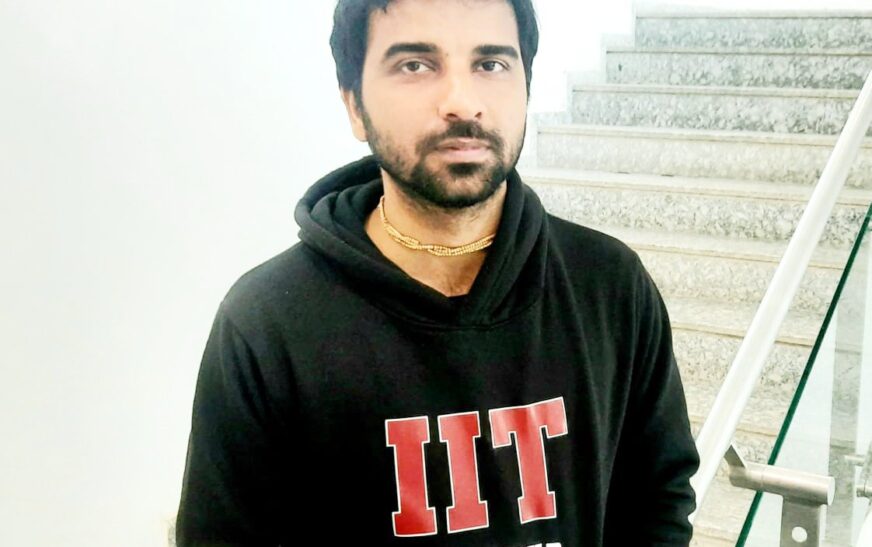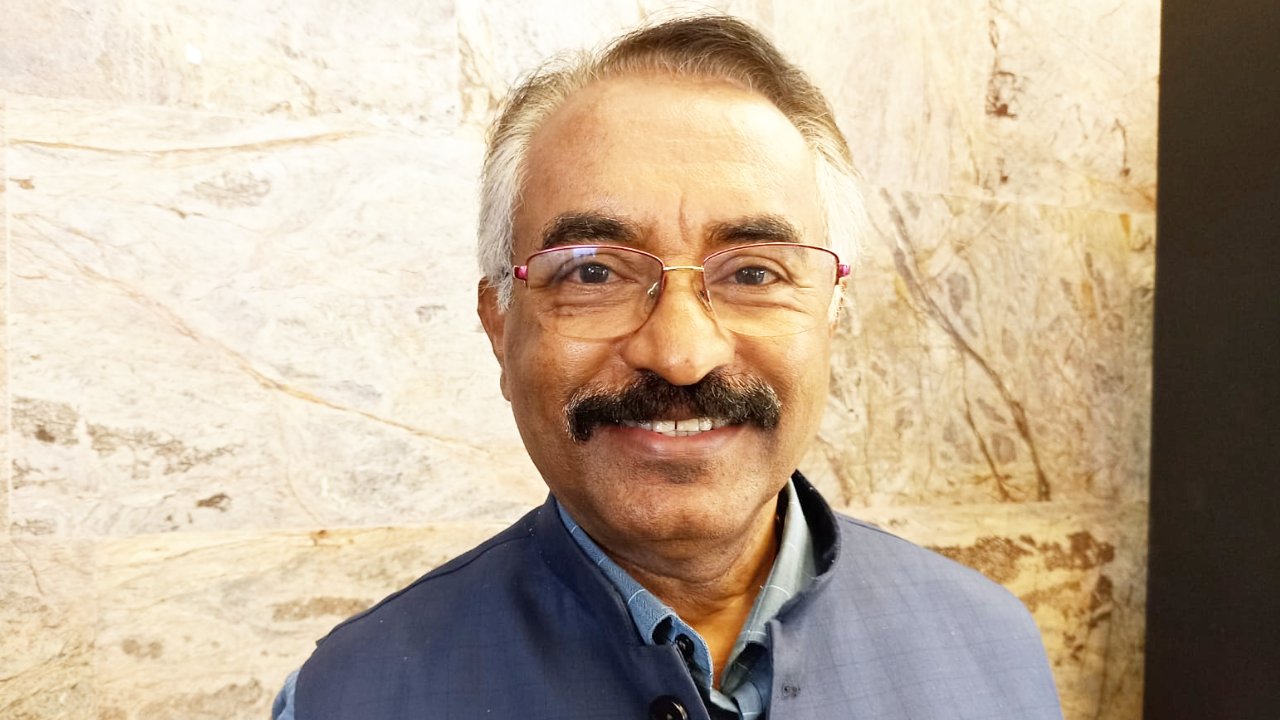Ankit Vashisht, the CEO of Blue Heart Robotics, is at the forefront of innovation with his latest creation, the “Happy Robot.” This social-wheeled robot goes beyond conventional boundaries by offering a source of comfort for people who keep pets. Ankit is gearing up to launch this groundbreaking invention in the Indian market within the next 2-3 months.
Expressing unwavering optimism, Ankit envisions how his robot will have a transformative impact on pet-keeping, story-telling, and social interactions within nuclear families. He believes his robot will elevate these aspects to a more sophisticated level. According to him, the future of robotics has arrived, and households will embrace these technological marvels in a more pervasive manner.
Ankit’s educational background includes a BTech in Robotics and Automation from Maharaja Agrasen Institute of Technology, Delhi, and an MTech in Robotics and AI from IIT Jodhpur.
In a candid conversation with The Interview World, Ankit sheds light on the journey of turning his passion into reality by creating a social robot. He emphasizes how the “Happy Robot” will tackle the challenges of loneliness prevalent in nuclear families. Here are some insightful excerpts from the interview.
Q: What inspired the social robots project? How does it address future isolation concerns, envisioning a solution for loneliness in 10-30 years?
A: From my earliest days, my passion for robotics has been unwavering. I embarked on the journey of pursuing a BTech degree solely to create robots that fascinated me. Subsequently, I pursued my MTech with the same fervor, driven by the desire to immerse myself in the world of robotics.
The conviction that the era of robots was imminent had always been ingrained in me. As a child, I avidly watched Dexter, a show featuring a young child who, much like a scientist, crafted robots. This fueled my aspiration to develop my social robots, serving as companions tailored to my preferences.
However, upon entering BTech, the notion of working as an employee under someone else’s guidance became unsettling. The prospect of being subordinate did not align with my vision. I grappled with the idea and decided to leverage my expertise and passion as a robotics enthusiast. Instead of working for someone else, I pondered, “Why not build my own robots?”
Recognizing that robotics was not a technology of the distant future but rather a present reality, I was convinced that the future was closer than we could imagine. Reflecting on the rapid evolution of technology, I drew parallels to the unexpected emergence of AI programs like ChatGPT, which reshaped the landscape of employment. Programming, once a dominant career choice, faced uncertainty, with even programmers contemplating their future existence.
This accelerated pace of change in our world led me to believe that the robots we envision as integral parts of homes a decade from now might materialize much sooner. It was plausible that, in just two or three years, robots would become commonplace in households, both in India and abroad.
Q: What features have you developed for this robot to enhance user experiences and engagement?
A: This robot uses SLAM technology, allowing seamless movement between different points. I’ve affectionately named it Happy, reflecting my goal to bring joy to people’s lives through this robotic companion. When someone calls out, “Happy, come here,” the robot efficiently navigates obstacles to reach the designated person, even in a dynamic environment with people moving around.
In addition to SLAM, Happy features built-in speakers and a microphone, enabling users to issue commands and express their thoughts, to which the robot responds accordingly. The incorporation of a high-end camera enhances its capabilities in computer vision and artificial intelligence, facilitating functions such as face detection and recognizing its owner.
These capabilities are inherent in the robot, allowing remote control from a different location. For instance, I can manage Happy from my workplace while it remains stationed in my home. This not only serves practical purposes but also transforms the robot into a remote CCTV system.
A: What kind of cybersecurity features are you using in your robot?
A: Primarily, the AI models within the robot are designed to operate locally. The only remote aspect involves video streaming, which is securely password-protected. This feature follows a standard similar to Google Meet, incorporating a conventional call feature. Furthermore, I’ve implemented custom enhancements to this technology in my app. From a security perspective, the robot is notably secure since it remains disconnected from any external network.
Q: How will the evolving social landscape replace traditional bonds, including pets and relationships how will your robot work in that sense?
A: Pets are undeniably adorable, making them a popular choice for companionship. People often acquire pets for emotional support or because they share a common passion. However, a significant challenge associated with having pets is the demanding nature of their care; it’s akin to caring for a child. The responsibility can be overwhelming.
On the other hand, my robot boasts an irresistibly cute face and impressive intelligence. Essentially, it serves as a unique kind of pet. When you interact with the robot, it responds with endearing facial expressions, providing a similar emotional support level as traditional pets.
Q: Does it incorporate AI algorithms to exhibit the desired behavior as intended?
A: I’ve incorporated reinforcement learning into the system. This technique allows the robot to learn from user inputs, discerning when the user is in a good or bad mood. To facilitate this, I’ve installed a sizable screen covering half of the robot’s structure. This screen acts as the face of the robot and dynamically adjusts its facial expressions based on the user’s interactions.
The primary purpose of this robot, aptly named ‘Happy,’ is to offer emotional support to individuals. By adapting its expressions to appear more endearing, Happy aims to enhance the user experience and foster a positive connection with people.
Q: What are your target market segments?
A: The prevalence of nuclear families is rapidly increasing. These families constitute a significant market. Furthermore, they serve as a crucial support system for the elderly generation. Additionally, they function as a source of entertainment for young children. Notably, nuclear families play a pivotal role in educating children by reciting alphabet rhymes such as “A for apple, B for ball, and C for cat.”
Moreover, they can narrate stories, which can be conveniently fed into the robot through a dedicated app on your phone. The robot can then seamlessly recite these stories to the children. Furthermore, it can play songs, enhancing its role as a versatile source of amusement.
Q: Does your robot emulate human assistive features, and when is your product expected to be market-ready with these functionalities?
A: Currently, the robots lack arms, making it impossible for them to grasp or manipulate objects. However, we have a plan in place to advance their capabilities. Incorporating arms or legs into a robot comes with an associated increase in cost, which is a consideration in our development process.
Presently, my primary focus is on creating a wheeled mobile robot. The robot I’ve designed falls into the category of wheeled mobile robots. There are also other categories, such as manipulator robots and humanoid robots, which possess arms and legs.
My future research will be centered on these categories, as they represent the future trajectory of robotics. Despite the existing landscape in the world of robotics, my unique approach aims to minimize costs for the Indian market. The anticipated cost for the consumer is approximately Rs. 25,000, potentially ranging from Rs. 25,000-30,000. The timeline for the next stages of development is expected to be around 2-3 months. Currently, the alpha version is ready, with beta and MVP (minimum viable product) stages to follow. I plan to launch the MVP within the specified timeframe.










4 Comments
I could not refrain from commenting. Perfectly written!
We’re a gaggle of volunteers and starting a brand new scheme in our community. Your site offered us with valuable information to paintings on. You’ve performed a formidable job and our whole group might be thankful to you.
whoah this blog is magnificent i love reading your articles. Keep up the great work! You know, lots of people are hunting around for this info, you can help them greatly.
You are a very capable person!
Comments are closed.